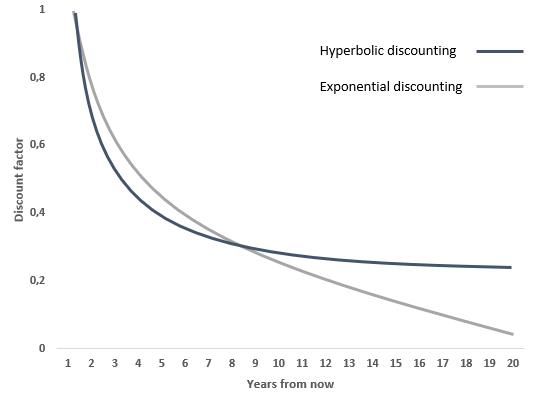
3 minute read
A special interest – in finance
from Investor Letter 2021
by REQCapital
very strong path of profitable earnings growth over the next ten years. That is the reason why CSI is a core holding in the portfolio.
We are always surprised at the variety of special interests in which people are enthusiastic. Some are very interested in ancient Egyptian pharaohs, while others are passionate about researching tanks used in World War II. Kyoto University in Japan offers a doctoral programme in "manga," comic books that originated in Japan.
Advertisement
In finance, there is one topic that we find particularly interesting and that we believe explains in large part why stocks are valued the way they are. This highly interesting topic is "hyperbolic discounting." It sounds like an academic theory - but it's not.
Cash flows in the dividend discounting model are discounted using what is known as "exponential discounting". This discounting method is the standard method for discounting cash flows. We all know it by heart from our business school exams. All investors use it because most have probably only heard of this discounting model. But what does this way of discounting cash flows actually mean, and is it the right way to discount cash flows?
The traditional way of discounting, exponential discounting, is "time insensitive," meaning that the discount factor always decreases at the same rate over time. This is the rational way to look at economics. Consequently, cash flows that are far in the future are not worth much under exponential discounting.
Hyperbolic discounting Behavioral studies of humans show that we do not behave the way traditional economic theory claims. We are not rational. Our human way of discounting is "time dependent." In other words, we use different discount rates depending on how long it takes to receive a payoff. Consider the following two examples.
1) You can choose between receiving $100 today or $110 in one year. In experiments, people have a strong tendency to choose $100 today to get the instant gratification.
2) You can choose between receiving $100 in ten years or $110 in 11 years. In this situation people tend to be willing to wait an extra year to get $110. Since the instant gratification is not there anyway, we act more rationally and think we can just wait one more year until year 11 instead of receiving the payout in year 10. It is so far into the future anyway.
The challenge in example 2, in which you decided to wait 11 years, is that when you approach year 10, you would rather get the instant gratification of $100 than wait another year. In other words, people avoid waiting the closer they get to the end of the waiting period.
In the short term, people are irrational, but in the longer term, they choose the rational option.
The basis for the hyperbolic discounting model is human behavior. The pattern that emerges from the way people choose as time goes on follows what is called a "hyperbola". People do not appear to use a constant discount rate as exponential discounting purports to do. In economics, hyperbolic discounting is a time-inconsistent model of discounting. People make decisions that are more similar to hyperbolic discounting than exponential discounting.
In hyperbolic discounting, valuations fall very quickly for periods close to the present because we want instant gratification, but they then fall slowly for longer periods that are deferred. The hyperbolic model discounts more than the exponential model at the beginning and less than the exponential model for very long term events.
Hyperbolic discounting states that discount rates are greater in the short term than in the long term. What does all this have to do with finance and the valuation of companies?
Hyperbolic discounting in finance In the hyperbolic formula, the present value of short-term cash flows is lower than in the exponential model, but the present value of longer-term cash flows is higher than in the exponential model. Consequently, the terminal value in hyperbolic discounting for companies with durable competitive advantages, will be higher than in the model we know from business school.
There are various kinds of mathematical expressions for the hyperbolic formula. I will not go into them, but will try to simplify the hyperbolic function using an example of a 20-year cash flow where the discount factor is decreasing over time. The falling discount factor reflects the way experiments point to how we as humans make tradeoffs, represented by the hyperbola. The resulting figure shows the discount rates using the exponential function and a hyperbolic assumption:
You will notice that by discounting the cash flows with a hyperbolic function, the present value of the firm is higher than with exponential discounting for companies with long term competitive advantages.





